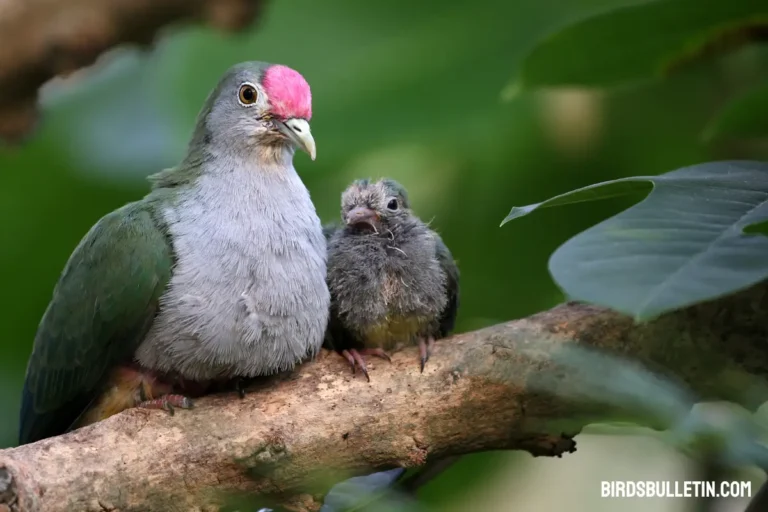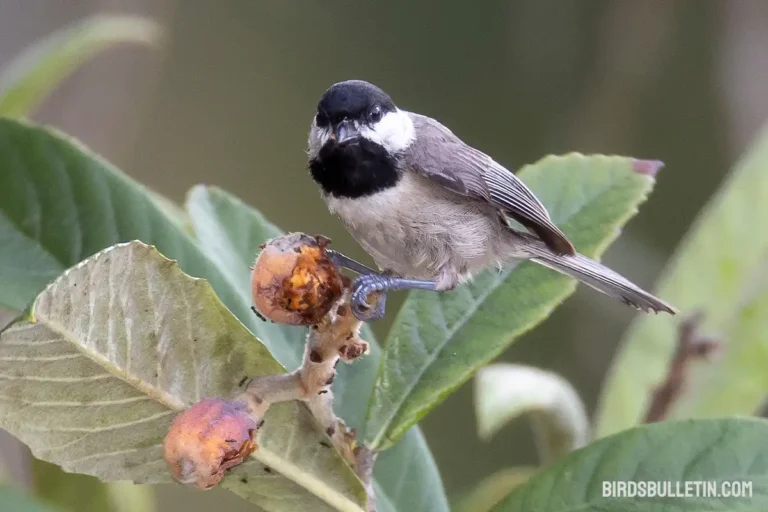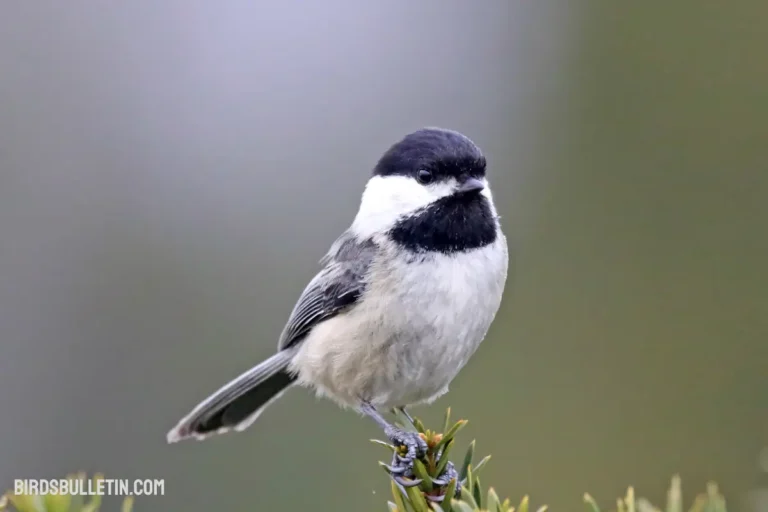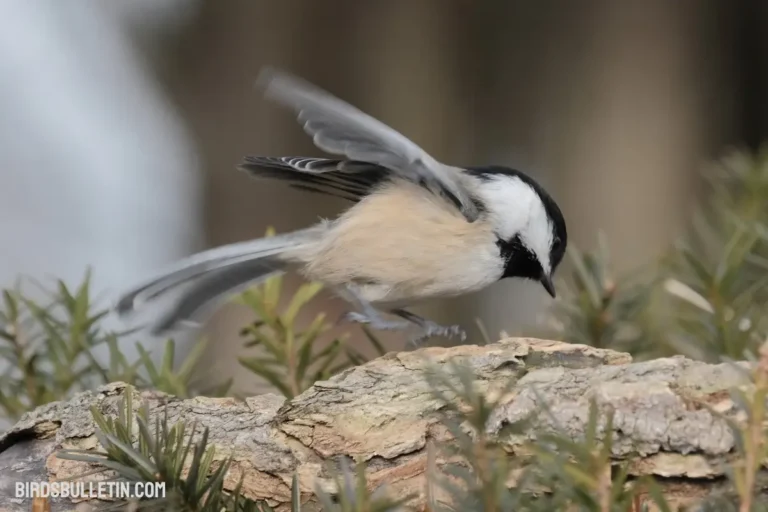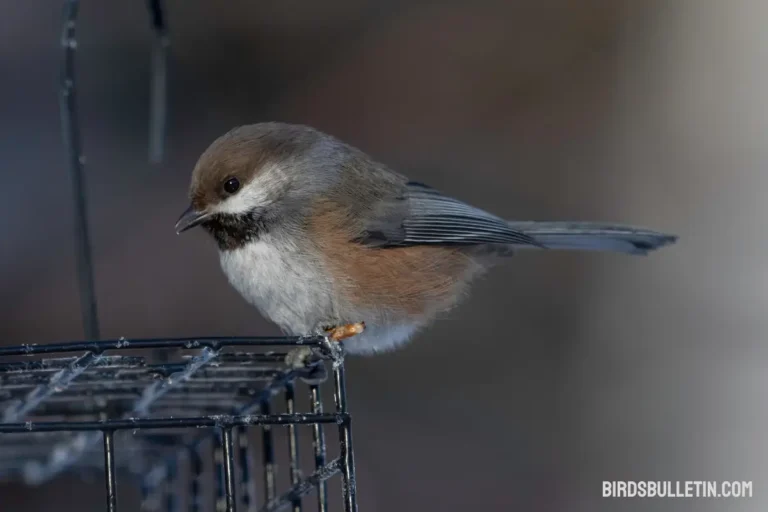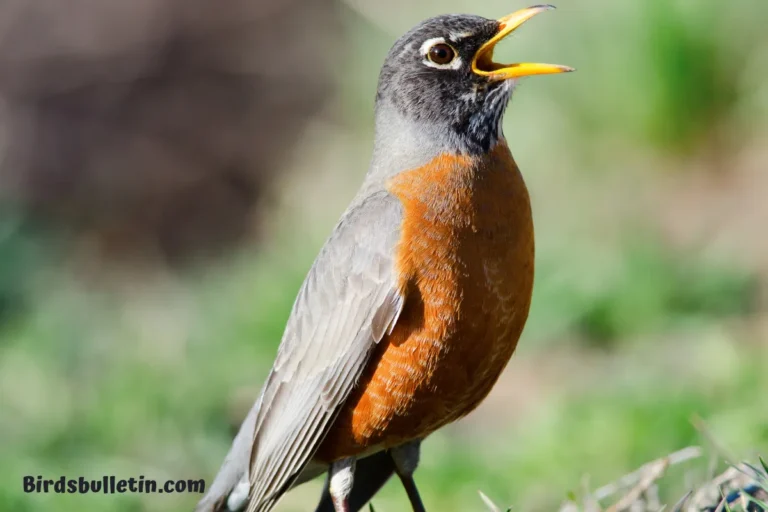American Goldfinch: Subspecies And More
The American Goldfinch (Spinus tristis) is a small, vibrantly colored finch native to North America. Goldfinches are popular backyard birds due to their bright yellow plumage and cheery twittering calls.
This species has been designated an official state bird as well as appearing in arts and culture. Let’s explore the identification, symbolism, ecology, behavior, conservation status, and unique human connections of the American Goldfinch.
Interested in similar topics on birds overview:
What Are the Main Visual Identifiers of The American Goldfinch?
This bird Goldfinch exhibits dramatic seasonal plumage changes. Breeding males are brilliant yellow with black cap, wings, and tail. Females are plain dull brownish-olive.
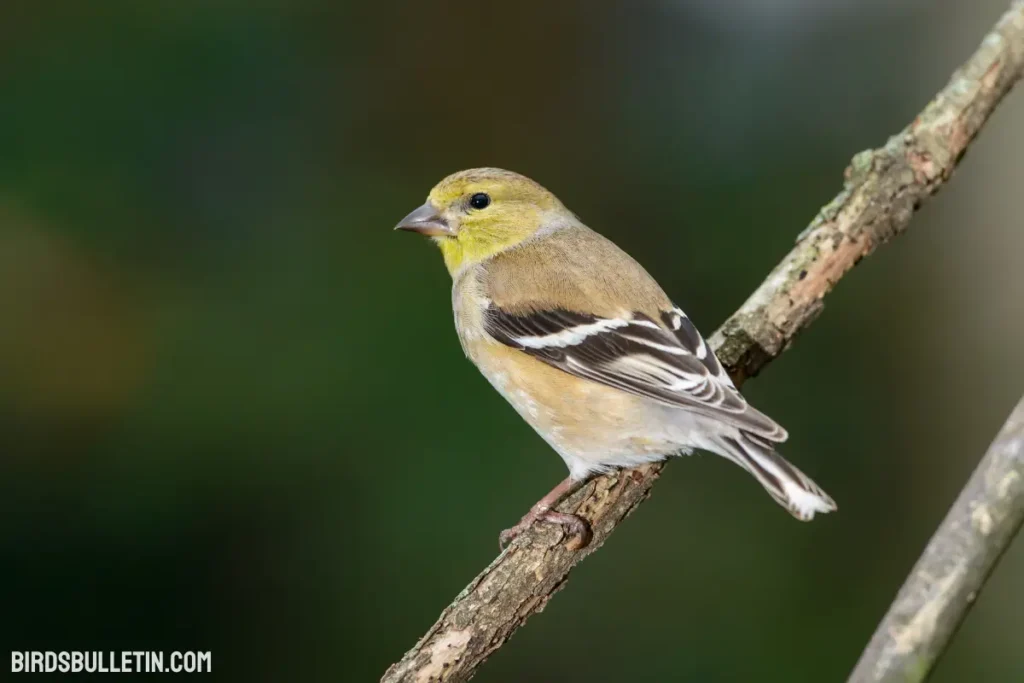
In winter, both sexes become more drab brownish-olive with buffy markings. The black wings with white patches and small conical bills help identify them year-round.
American Goldfinch Profile
| Feature | Information |
|---|---|
| Scientific Name | Spinus tristis |
| Alternative Names | Wild canary, yellowbird |
| Color | Males bright yellow and black, females dull greenish-yellow |
| Lifespan | 3-6 years on average, Maximum recorded 11 years |
| Wingspan | 7.5-9 inches |
| Weight | 0.5 oz |
| Size | 4.3-5.1 inches long |
| Diet | Seeds from thistle, birch, elm, dandelion; also, tree buds |
| Breeding Season | Late summer, July-September |
| Eggs Per Clutch | 2-7 eggs |
| Locations | U.S., Canada, Mexico; summers across most of North America |
| Threats and Predators | Outdoor cats, collisions with buildings/cars, loss of habitat |
| Prey Eaten | Seeds, some insects and spiders |
State Bird And Symbol
The American Goldfinch is the state bird of Iowa, New Jersey, and Washington. This status recognizes the bird’s beauty and its presence across much of North America.
In Iowa, the American Goldfinch became the official state bird in 1933. It was chosen due to its ubiquity across the state and its ability to thrive in Iowa’s prairies and gardens. Many Iowans enjoy seeing goldfinches at their feeders.
New Jersey named the American Goldfinch as its state bird in 1935. It is commonly found across the state and adds a splash of color to New Jersey’s landscapes. The goldfinch represents nature’s beauty.
Washington designated the American Goldfinch as the official state bird in 1951 to highlight its cultural significance. The Salish name for the goldfinch was “wild canary”, showing its long history in the region. The goldfinch remains a beloved bird today.
Species or Subspecies
The American Goldfinch is considered a single species, Spinus tristis. However, there are recognized subspecies based on geographical variation:
- 01. The eastern goldfinch (S. t. tristis) ranges from southern Canada to Colorado in summer, and from southern Canada to Florida and Mexico in winter.
- 02. The pale goldfinch (S. t. pallidus) ranges from British Columbia to western Ontario in summer, and from southern Canada and northern California to Mexico in winter. It is slightly larger than the eastern subspecies.
- 03. The northwestern goldfinch (S. t. jewetti) is found along the Pacific Northwest coast from southern British Columbia to central California, overlapping the pale subspecies range.
- 04. The willow goldfinch (S. t. salicamans) occurs west of the Sierra Nevada in summer, and in Baja California and the desert Southwest in winter. Its plumage is browner year-round than the other subspecies.
While differences exist between subspecies, the American Goldfinch breeds freely across its range. Many overlapping hybrid zones exist rather than clear boundaries.
What Is the Current Global Population Estimate and Trend for The American Goldfinch?
The American Goldfinch has an extremely large range across North America. Its breeding range extends across the United States (except the Southwest) and Canada.
Goldfinch numbers today remain stable. According to the North American Breeding Bird Survey, there are an estimated 24 million American Goldfinches in North America.
Part of the goldfinch’s success is its ability to adapt to human landscapes like suburbs, parks, and backyards. Bird feeders provide abundant food. As long as seed sources exist, goldfinch populations remain robust.
What are the migratory patterns of American Goldfinches?
American Goldfinches are year-round residents across most of their range. However, their migratory habits are complex:
- Northern populations migrate south for the winter to areas like the southern U.S. and Mexico.
- Some remain in northern areas year-round if food is available. Flocks congregate at bird feeders.
- Southern goldfinches may move slightly north/south or to higher elevations to breed.
- Migratory movements are quite fluid and localized based on food supplies. Goldfinches will wander irregularly if needed.
Unlike many birds, goldfinches migrate in late summer/fall rather than spring. This delay allows them to take advantage of late-ripening thistle seeds for fuel. Their winter grounds have abundant food in fields and feeders.
Behavior
American Goldfinches display some interesting behaviors:
- Social and Gregarious: Goldfinches are highly social, foraging in noisy flocks. Flocks remain together throughout the year.
- Late Nesting: Goldfinches begin breeding later than most birds, typically in July or August. This timing coincides with the ripening of thistle seeds they feed their young.
- Unique Flight: Their bounding, undulating flight pattern is distinctive. Goldfinches frequently fly in an elliptical, wavelike pattern.
- Vocalizations: They have a wide variety of musical calls including twitters, swees, tee-dees, and their famous po-ta-to-chip flight call.
- Feeding: Mostly granivorous, with a diet dominated by seeds. Particularly fond of Nyjer thistle and sunflower seeds. Also eats buds, sap, and some insects.
Overall, American Goldfinches are highly social, vocal, active, and entertaining birds! Their late breeding season and fluid migrations also make them unique.
Interactions with Humans
The American Goldfinch has a close relationship with humans across its range:
- Backyard Favorite: Goldfinches are one of the most popular backyard birds at feeders, thanks to their bright colors and acrobatic ways. People love hearing their musical songs.
- State Bird: As mentioned earlier, the goldfinch is the state bird of Iowa, New Jersey, and Washington. This honors its cultural and ecological significance.
- Inspiration in Art/Media: The Goldfinch’s brilliant plumage has inspired artists, poets, state symbols, and more. It appears in works by Audubon and in the Twitter logo.
- Native American Symbolism: Some Native American groups saw the goldfinch as a symbol of the sun and renewal. Its late nesting season aligned with ceremonial timing.
- Brood Parasite Host: American Goldfinches are frequent hosts of the parasitic Brown-headed Cowbird, unwittingly raising cowbird young. This demonstrates their close interface with other species.
Overall, the American Goldfinch holds a special place in human hearts from backyard feeders to high art due to its beauty, personality, and symbolism.
What conservation concerns currently exist for the American Goldfinch?
American Goldfinch has a healthy, stable population and is categorized as Least Concern by the IUCN Red List. However, possible conservation issues include:
- Habitat Loss: Conversion of fields and meadows to developments may reduce food and nesting sites. Grasslands are especially threatened habitats.
- Collisions: Goldfinches are prone to colliding with windows and cars when drawn to feeders near human structures.
- Climate Change: Warming temperatures may affect range and migration patterns. Timed food sources for breeding may also be disrupted.
- Disease: Goldfinches are susceptible to certain avian diseases spread at bird feeders, such as salmonellosis and trichomoniasis. Sick birds at feeders should be reported.
While American Goldfinches thrive today, protecting open seed-rich habitats and mitigating window collisions can help ensure goldfinch populations remain happy and healthy.
Laws Protecting Goldfinches
This bird is protected under the Migratory Bird Treaty Act of 1918, along with all other native wild bird species. This act makes it illegal to harm, harass, or kill goldfinches, their nests, or eggs without a permit. Violations can result in fines and/or criminal penalties.
These laws aim to safeguard goldfinch populations from overhunting and unnecessary habitat destruction. Proper bird feeder practices and keeping cats indoors can help community members comply with goldfinch protections.
Frequently Asked Questions
01. Why do American Goldfinches turn yellow in the spring?
The vibrant yellow coloring comes from carotenoid pigments in foods goldfinches eat like seeds and flowers. In the fall and winter, goldfinches molt into a dull brownish plumage. When their diet shifts in spring to more carotenoid-rich foods, their bright yellow feathers grow in.
02. How can I attract American Goldfinches to my yard?
Goldfinches are drawn to Nyjer thistle and sunflower seeds. Use feeders with small perches and thistle socks. They also appreciate a water source like a birdbath. Avoid pesticides on your plants, as goldfinches eat seeds and buds.
03. What does the American Goldfinch symbolize?
To many, the goldfinch epitomizes cheerfulness, optimism, and joy with its bright colors and songs. Its late summer breeding season links it to renewal and new beginnings. Christian symbolism sometimes connects the goldfinch to Christ’s passion and sacrifice.
Final Word
With its brilliant plumage and musical voice, the American Goldfinch is truly a jewel of North America’s birdlife. We are fortunate to share our backyards and neighborhoods with these captivating songsters.
Protecting wild areas where they breed and taking care to minimize hazards near homes allows us to safely enjoy goldfinches for generations to come. Listening to the melodious voice of a goldfinch brightens any day.
References
- The Cornell Lab of Ornithology. “American Goldfinch.” All About Birds. https://www.allaboutbirds.org/guide/American_Goldfinch
- The Audubon Society. “American Goldfinch.” Audubon Field Guide. https://www.audubon.org/field-guide/bird/american-goldfinch


